Another project is underway at an area called Babati. It started about 2 years ago and is a bit behind schedule and needs help. Babati is about a 4 hour drive west of Arusha. 2/3rds of the way is tarmac as that is the way to the game watching parks. After that, the last 60 km is on gravel road and that part takes a long time. Average speed of 25 km per hour on a lot of it. Thankfully there are some contractors from China who are in the process of getting the road ready to seal. It may be next year before it is done and should then be a boom to the Babati economy as it will then be a lot more accessible to Arusha and the tourist industry. Babati is close to the rift valley's huge escarpment so some of the scenery is quite picturesque. At the moment there is very little in the way of any facilities to attract tourists to the region. The roads are poor. It gets a lot of rain in the wet season and agriculture is full swing out there. Part of the project is to install a number of new water wells and rehabilitate older water points that no longer work. We have come out here to help with getting 20 new wells drilled. We spent part of January and February writing and sending out bid documents for water well location surveying and their drilling, then reviewing the offers. In mid March we drove out here in the Adra Land Cruiser and our little Pajero. The roads out here are way too rough for the Pajero and the Land Cruiser is the ideal vehicle to use for day to day work. Babati is a small town at a T intersection of 3 roads. The road to the east is to Arusha, to the west is the road to Dadoma and to the North is the road to Singida. The arms of the T are tarmac sealed for about 1 km in each of the three directions then it is rough gravel/dirt road. The town has the normal collection of guest houses, hardware stores, salons, a couple of banks, some bars, stationery stores and petrol stations. No western restaurants at all. We are staying at a small 9 room guest house called the White Rose and given where we are, it is quite nice. Some days it reminds us of Fawlty Towers with the one guy who runs everything, Michael, getting called in all different directions at once. The only other place to eat in town for Mzungus is Pik-n-Pay where a bowl of rice and beans is $2 and coke is 40 cents. You can only eat so many bowls of rice and beans over a couple of weeks, before your appetite starts to fade away.
The first weekend we got there, there was no work to do so we went for a hike up onto a hill behind the town. All dirt roads and crossing through peoples yards to get to the hill. It provided a nice overlook of the town and the lake on the nw end of the town.
The drilling contractor Chuck we are using is from Oregon and has many years of drilling experience. He was with us in Gairo last year too. Chuck is an easy going retiree. Chuck already had his survey crew here by the time we arrived in Babati and the drilling crew arrived a couple of days later. The survey equipment was new to us. It measures electrical resistivity in the ground along a 600 m long line with electrodes spaced every 10 m apart. The signal can penetrate down to approx 100 m in depth. It shows the results on a coloured contour 2D plot. Low resistivity being clays, medium resistivity being sands and gravels (where the water would be located if it was there at all) and bed rock is high resistivity. It takes about a day to do one survey by the time we drive there on these roads, do the survey and get back, so it can be a slow process. Babati is a hilly region so it is unlikely that there will not be a place to drill somewhere along the 600 m line. However in many cases we struggle to find a place 600 m long to lay out the cables. The little valleys may not be that wide and at this time of year, any flat land is covered by 5 ft high maize plants. While the maize is ok to survey in, we cannot get the drill rig in there as the ground is too soft and the truck would get stuck. It is currently the rainy season where it rains on and off almost every day so any tilled ground is very soft. We could have waited till the end of the rainy season to drill but the project is rapidly running out of time as it is and delaying another couple of months would have been a bigger problem. The local government policy is to locate water wells 100 m away from any building or road, which is proving quite difficult to do in this terrain. We keep questioning what constitutes a road in this country? Is a dirt path in a maize field a road? No one can answer of course. To us putting a well somewhat close to a road makes more sense as it is then accessible to the well users, rather than make them carry their buckets across the country side. We had the same consensus in Gairo last year so not sure why it is different here. Also here there are more politics of a lot of other parties wanting to be involved and have their say which makes it slow to work out here.
Due to the number of officials watching us on site, we are being extra careful to document the progress and well performance. A hand pump can only pump about 500 liters per hour. We are endeavouring to drill to depths where we can get at least 2000 liters per hour. This may not be possible for all locations and so we spend quite a amount of time measuring the flow rate of water coming from the well over a few hours to verify it is suitable for a hand pump. To measure the flow rate, we use the rig compressor to air lift all the water from out of the hole. Once out of the hole the water falls on the ground and runs off to the low point. By making small earth works from the drill cuttings, we control where the water runs off to and can direct it to flow through a V-notch weir we made in town one day or if the ground is soft enough to dig a big enough hole in to hold a 20 l bucket down in it, then we flow the water through a 150 mm diameter PVC pipe and measure how long it takes to flow 20 liters of water into a 20 liter bucket held under the pipe outlet. From that we compute the flow per hour.
After 2 weeks we had only drilled 4 bores and had broken two down hole hammers and gotten stuck many times. Getting parts for the hammers proved tricky and they have to be ordered from India so this has bought the drilling to a halt for at least two weeks. That coupled with the problems the rain was causing of getting these heavy trucks stuck every time we got off a road means we are on hold for at least two weeks so we have come back to Arusha. The little town of Babati is on a slight downhill W-E slope. At the top of the town just north is a lake covering a couple of 100 acres. With all the rain, the level has risen to where the normal overflow outlet cannot handle the flow so the lake is spilling its water over the edge and into the main street of the town. On either side of the main street are 1 m deep and 1 m wide open drains to channel water off. The one on the lake side runs at full flow the whole time we have been there. The one on the other side of the street is blocked in a culvert and no one bothers to clean it out, so it is empty and can’t help with any run off. If more water flows from the lake than the first drain can handle, then the water flows across the main street in many places and at quite a few cm deep. It makes it hard for the locals who have to walk everywhere to walk around through this water and all the mud it creates along the side of the street and into any of the shops. About ½ of the area for the bus station is underwater that people have to walk through. The kids love these drains flowing with all the water. They take a mosquito net (probably from some well wishing donor) and since the nets are a nice conical shape it makes an ideal net to hold the opening across the width of the drain and catch fish in that have been caught up in the lake overflow. Some of them spend all day in the drain fishing, even on school days. Go figure!
Subscribe to:
Post Comments (Atom)
































































































































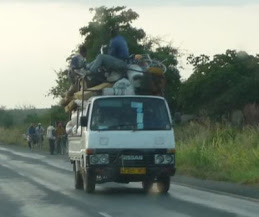





























































































































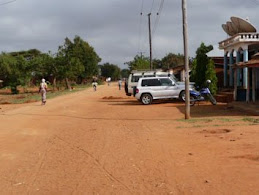

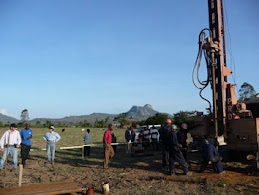


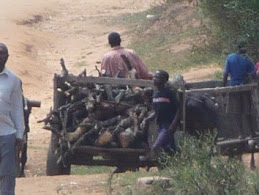
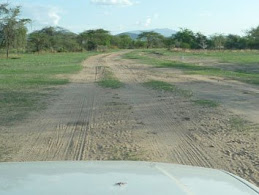























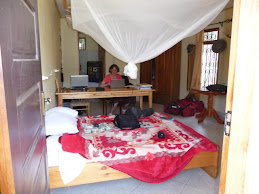

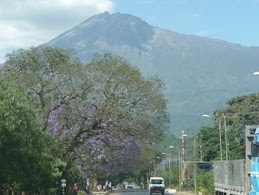
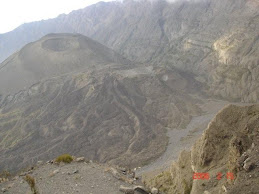
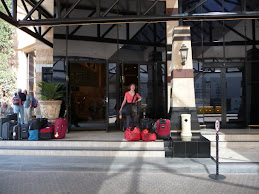
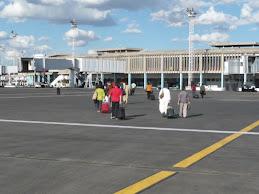
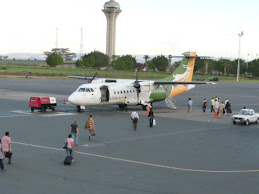
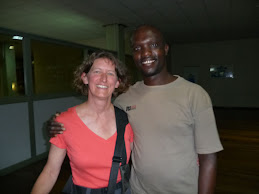
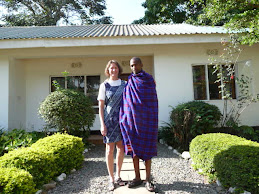
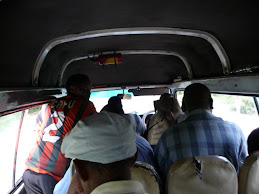


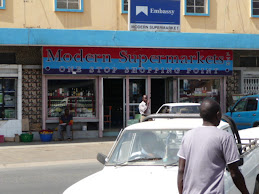





No comments:
Post a Comment